As we approach the end of 2021, I wanted to bring this year’s newsletters to a close by sharing a wee bit about Hogmanay traditions from my homeland and some festive mocktail recipes to celebrate - that I promise you taste just as good as their boozier counterparts.
Here in Scotland, Hogmanay - otherwise known as New Year’s Eve - has always been a big deal. Experts are undecided on where the name came from: some think Anglo-Saxon ‘haleg monath’ or Holy month, others believe the Scandinavian ‘hoggo-nott’ meaning Yule, or the French ‘hoginane’ meaning ‘gala day’. The term was first used widely following Mary, Queen of Scots’ return from France in the 16th Century, but Hogmanay celebrations date back to Pagan times, as part of the Midwinter festival of Yule and its ‘daft days’ of eating and drinking, hosting and celebrating in a bid to appease the spirit realm with food and hospitality.
As a result of the Reformation, celebrations associated with Catholicism - including Christ’s Mass, that is, Christmas - were discouraged and eventually banned by the 1640 Act of Parliament. Many believe this is what pushed the holiday season towards secular Hogmanay celebrations. Christmas didn’t even become a public holiday in Scotland until 1958 - later than the rest of the UK - so Hogmanay was Scotland’s big moment, and in many ways still is.
There are many traditions associated with the holiday: the one you will all know is the singing of ‘Auld Lang Syne’, written by Scottish Bard Rabbie Burns, after the bells as the new year begins. Most people don’t realise you’re only meant to link arms at the final verse “And there’s a hand, my trusty fiere!” It’s also traditional in Scotland to clean the house on New Year’s Eve, including removing ashes from the hearth - clearing out the old year to welcome in the new.
The main New Year tradition is ‘first footing’ - visiting friends or family immediately after midnight. Traditionally the very first foot should be a tall, dark-haired man for luck - dating back to Viking invasions, when the arrival of a blonde man could be bad luck (I say this coming from a family of blondes!). Traditionally, the first foot should come bearing gifts of a black bun (dark rye bread) and a lump of coal to ensure the house is fed and warm. I propose these chocolate and marzipan biscuits which I shared in my Instagram Live today instead - much tastier if you ask me, and a great way of using up leftovers.
Now, onto the mocktails. I’ve been teetotal for a few years now: alcohol is a trigger for my migraines and, frankly, not worth the hangover for me. Everyone always loves to ask why, but it’s that simple - and no, you’re not going to change my mind; and no, I’m not pregnant! There are so many great alcohol-free options these days, from Seedlip to Feragaia. In Edinburgh, Aizle has a wonderful list of homemade soft drinks, and even offers a paired selection of said drinks to go alongside their tasting menu - like the wine. Their chinnotto (spiced orange syrup) is perfect for this time of year. Edinburgh favourite Timberyard also has delicious and thoughtful alcohol-free drinks, including a wonderful smoked tea and damson mocktail I sampled the last time I was in.
At home, whenever I have guests I always try to supply a creative non-alcoholic option and - as with my attitude to veggie food - I try to make them inclusive rather than drawing attention to difference. So each of the below recipes can be enjoyed by non-drinkers but would also go well with a shot of your favourite tipple too. Whether you’re cutting back after some festive over-indulgence, designated driver, expecting, teetotal or don’t drink for whatever reason, hopefully there’s something here for you: fruity, spicy, citrus or creamy!
Blood Orange & Vanilla Mulled Punch:
I love the spice and fruitiness of warming mulled wine & wanted to try and recreate the flavour without the booze - though you could easily swap in red wine instead of the juices and use the same fruit and spices. To make a panful, you will need:
700ml red grape juice
250ml pomegranate juice (I didn’t add sugar as I could only get a sweetened juice drink)
Juice of half a blood orange, plus the other half chopped into slices
4 star anise
2 cinnamon sticks
6 cloves
4 cardamom pods, 2 bashed open
A grating of nutmeg
One teaspoon of vanilla extract.
Measure all the ingredients into your pan and warm over a low heat for 15 minutes, making sure you don’t let the mixture boil. Leave to infuse for at least an hour. Reheat and serve garnished with a star anise and orange slice each and enjoy ❤️
Ginger Fizz:
To make one serving, you will need:
1 tbsp ginger syrup (I used the syrup from my stem ginger, but you could make your own by pounding fresh ginger to release the juices and reducing it down with equal parts sugar and water)
1 tbsp lime juice
Soda water
Crystallised ginger and fresh or dried lime rounds to garnish (I made mine by drying out lime slices in a low oven for about an hour).
Simply muddle the syrup and lime juice, top up with soda water and serve with dried lime and crystallised ginger garnish.
‘Irish Coffee’ (without the Baileys):
To make one serving, you will need:
Enough coffee to fill your receptacle 3/5 full with coffee made to your usual strength
Condensed milk, to taste (I used approx 1/5 of the cup)
Enough cream to fill the final 1/5 of your receptacle
Cocoa powder, to coat the rim and dust the top.
First, coat the rim of your receptacle with cocoa powder – I used a simple sugar syrup (a 1:1 ratio of sugar dissolved in water) to wet the edge and then dipped the rim in cocoa powder, turning for even coverage. Make coffee to your taste and fill your prepared receptacle approximately 3/5 full. Add the condensed milk to sweeten and add creaminess in place of the Baileys. Carefully float the cream on the top of the coffee – the trick here is hot coffee, fridge cold cream and a very steady hand! Sprinkle with cocoa powder and serve.
Happy Hogmanay when it comes!

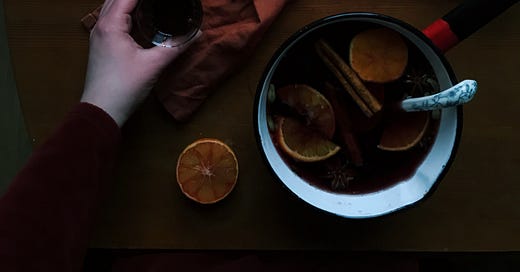


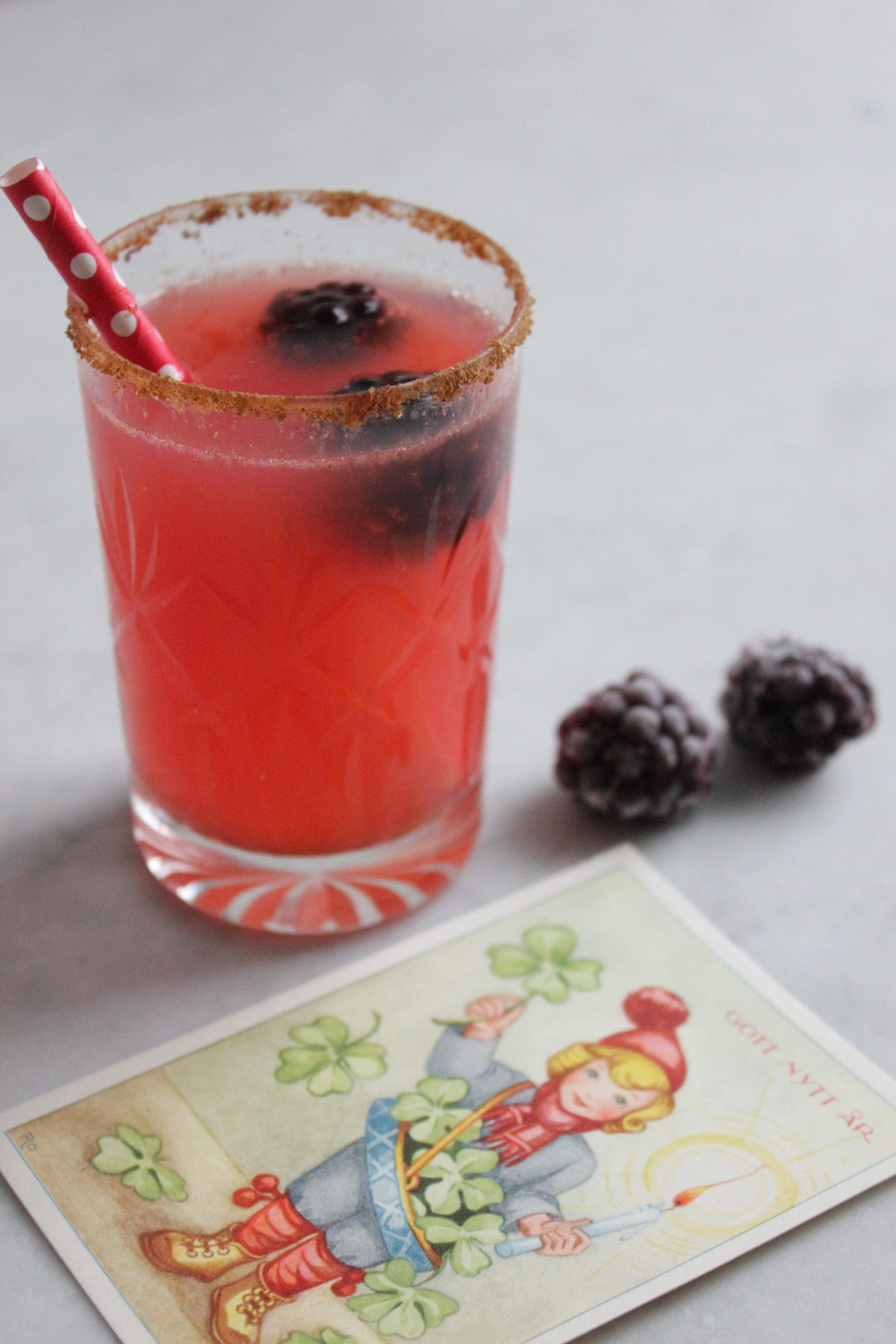
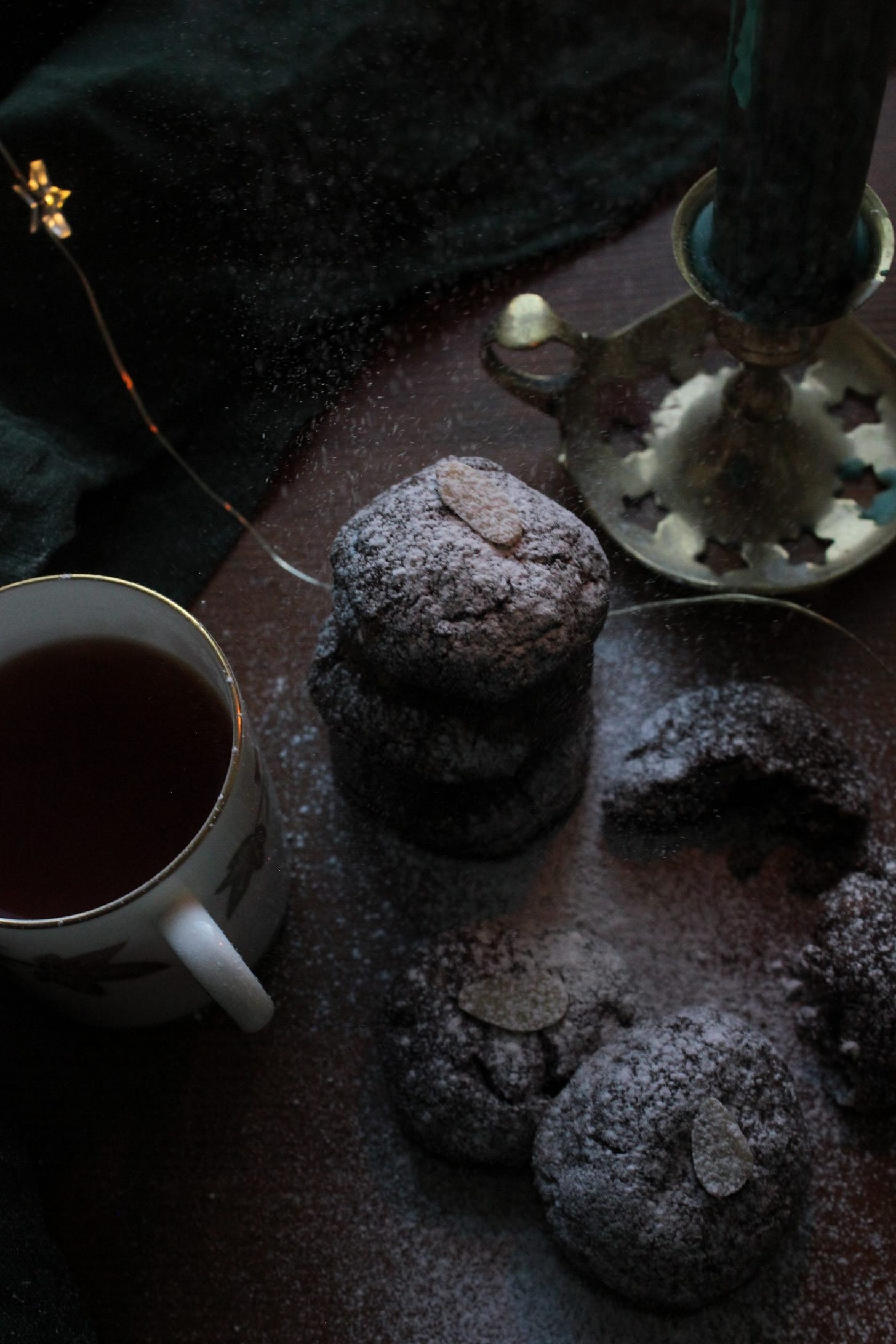

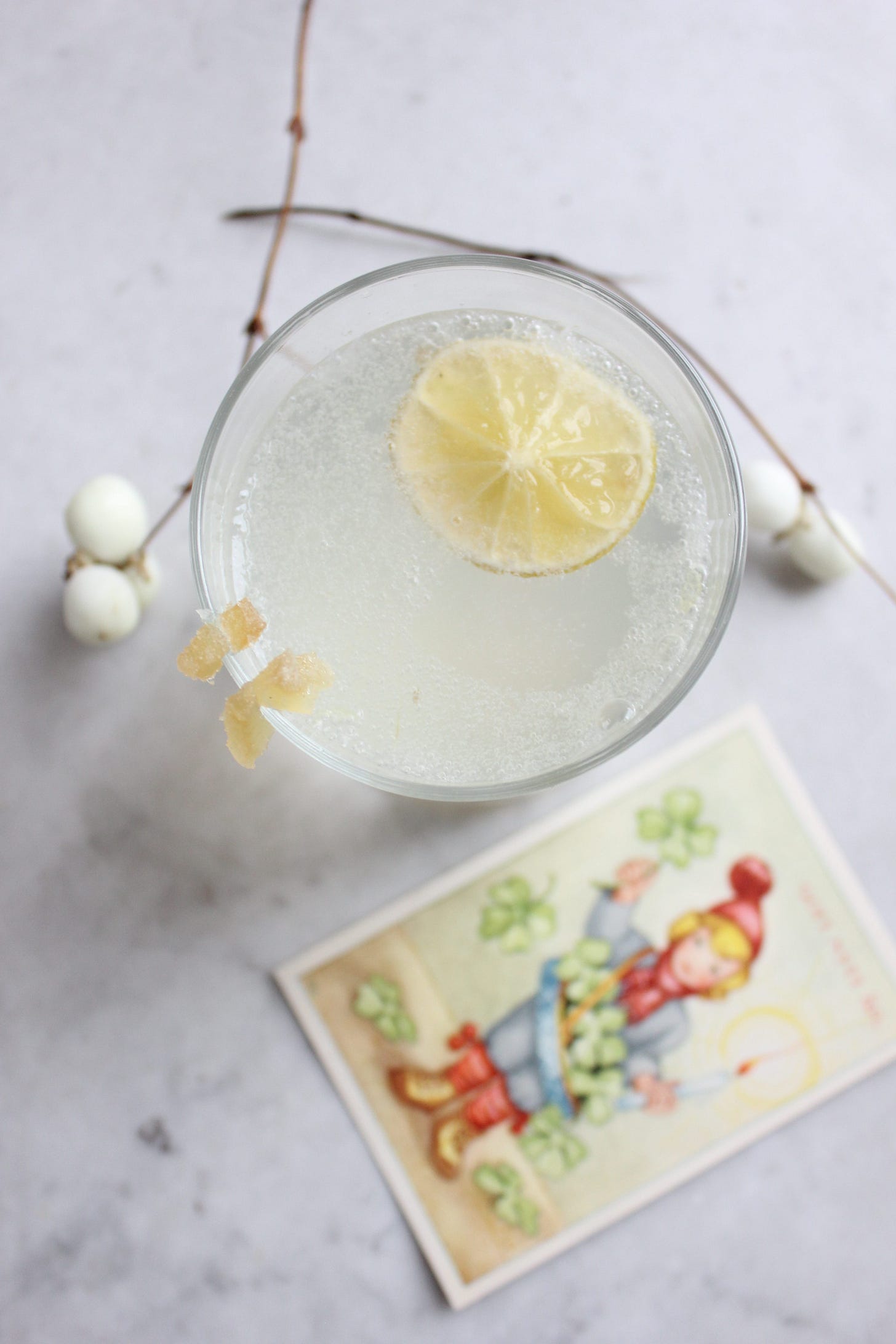
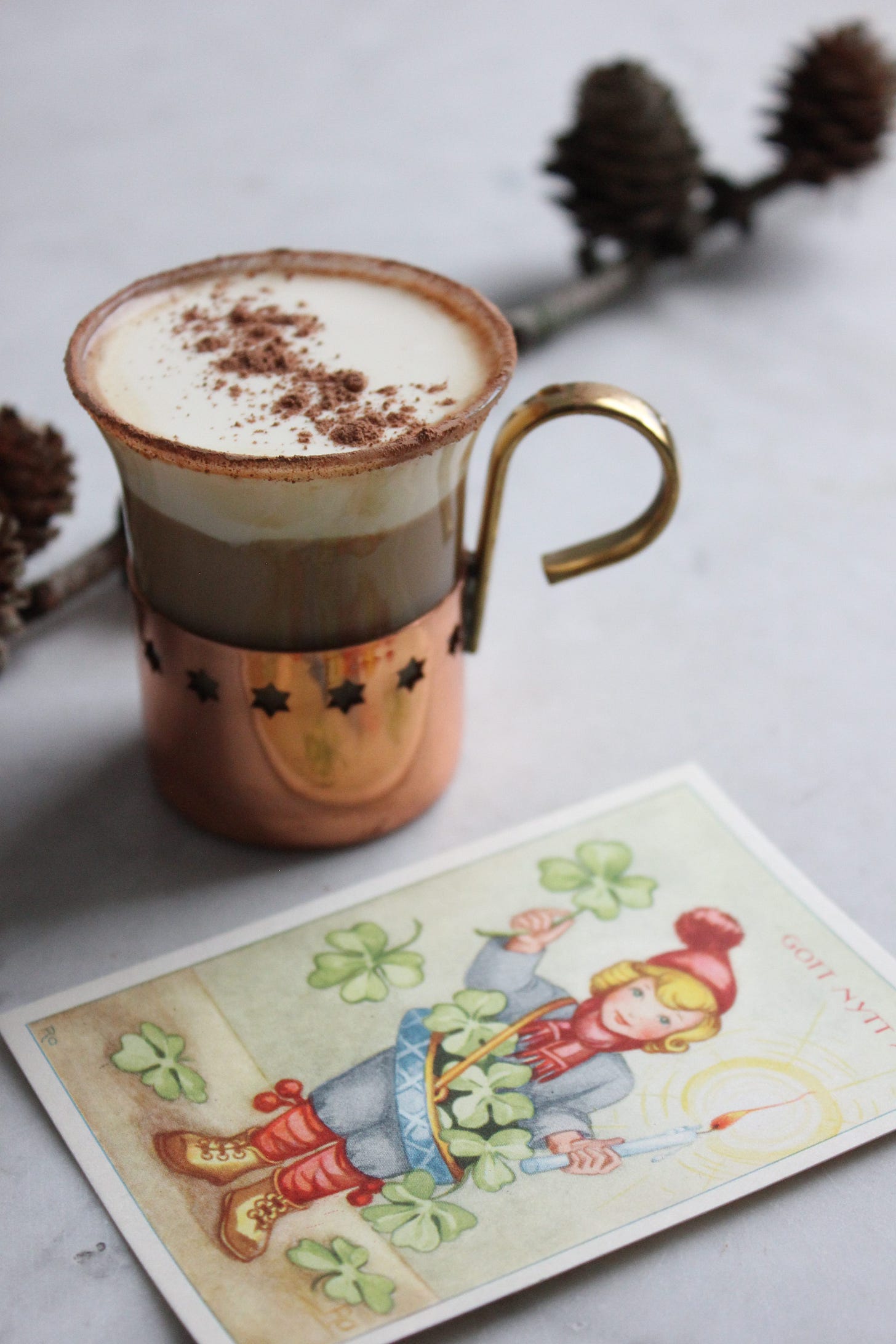
Happy Hogmanay Rosie to you and your family too! 🌟 🌟 🌟 🌟 🌟 🌟